- Shifting Landscapes: A comprehensive view of news today and the forces reshaping our world.
- The Digital Revolution and News Consumption
- The Rise of Social Media as a News Source
- The Challenges of Misinformation and “Fake News”
- The Evolving Role of Journalism
- Data Journalism and Investigative Reporting
- The Search for Sustainable Revenue Models
- The Future of News
- The Importance of Media Literacy
Shifting Landscapes: A comprehensive view of news today and the forces reshaping our world.
In an era defined by rapid information dissemination, understanding the landscape of today’s updates is more critical than ever. The constant stream of information, often referred to as ‘news today‘, shapes our perceptions, influences decisions, and ultimately constructs our understanding of the world. This comprehensive overview delves into the multifaceted forces reshaping the news cycle, exploring the evolution of media consumption, the challenges of misinformation, and the implications for society as a whole. We will examine the influence of technology, the shifting power dynamics in journalism, and the increasing demand for reliable and unbiased reporting.
The very concept of ‘news today’ has undergone a dramatic transformation. Historically, news was curated and delivered through a limited number of channels – newspapers, television, and radio. Now, a multitude of online platforms, social media networks, and citizen journalists contribute to the information flow. This democratization of news dissemination presents both opportunities and challenges. While it allows for greater diversity of voices and perspectives, it also creates fertile ground for the spread of false information and the erosion of trust in established media institutions.
The Digital Revolution and News Consumption
The proliferation of digital technologies has fundamentally altered how people consume information. Smartphones, tablets, and computers have become primary sources of news, allowing individuals to access updates from anywhere in the world at any time. This immediate accessibility has led to a shorter attention span and a preference for concise, easily digestible content. The traditional long-form articles and in-depth investigations are increasingly being replaced by short snippets, headlines, and social media posts. Effectively, news is now consumed in smaller doses and more frequently throughout the day.
This shift in consumption habits has forced media organizations to adapt. They are now investing heavily in online platforms, mobile apps, and social media strategies to reach wider audiences. However, this adaptation also presents economic challenges. The revenue models that supported traditional journalism – subscriptions and advertising – are struggling to keep pace with the changing landscape. Many news organizations are exploring new revenue streams, such as paywalls, membership programs, and philanthropic funding, but the future of journalism’s financial sustainability remains uncertain.
The Rise of Social Media as a News Source
Social media platforms have become increasingly important sources of information, particularly for younger generations. Platforms like Facebook, Twitter, and Instagram are used to share news articles, breaking updates, and personal perspectives. While social media can be a valuable tool for discovering news, it also presents significant risks. The algorithms that govern these platforms often prioritize engagement over accuracy. This can lead to the amplification of sensationalized and misleading content, as well as the creation of echo chambers where individuals are only exposed to information that confirms their existing beliefs. Critical thinking and media literacy are more important than ever.
The speed and reach of social media also make it an ideal avenue for the spread of misinformation and disinformation. False or misleading content can go viral within minutes, reaching millions of people before it can be debunked. The lack of editorial oversight on many social media platforms exacerbates this problem. While some platforms are taking steps to combat misinformation, such as fact-checking initiatives and content moderation policies, these efforts are often insufficient to address the scale of the problem. The responsibility for discerning truth from falsehood ultimately falls on the individual consumer. This requires a proactive approach to evaluating sources and questioning information.
Furthermore, the reliance on social media as a news source can contribute to polarization and political division. The algorithmic curation of newsfeeds can reinforce existing biases and create echo chambers, making it more difficult for individuals to engage with diverse perspectives. This can lead to a decline in empathy and understanding, and an increase in animosity towards those who hold different beliefs. Bridging these divides requires a conscious effort to seek out diverse sources of information and engage in respectful dialogue.
The Challenges of Misinformation and “Fake News”
The proliferation of misinformation and disinformation poses a serious threat to democracy and social cohesion. False or misleading content can manipulate public opinion, undermine trust in institutions, and even incite violence. The term “fake news” has become ubiquitous, but it is often used to describe a wide range of problematic content, including satire, biased reporting, and outright false information. Understanding the different types of misinformation is crucial for effectively combating it. ‘News today’ can be distorted in many formats.
The spread of misinformation is often facilitated by bots and trolls – automated accounts and malicious actors who deliberately spread false or misleading content. These actors may have political or financial motivations, and they are often adept at exploiting vulnerabilities in social media platforms. Identifying and neutralizing these actors is a complex task that requires collaboration between technology companies, governments, and civil society organizations. The challenge is to strike a balance between combating misinformation and protecting freedom of speech.
Combating misinformation requires a multi-pronged approach, including media literacy education, fact-checking initiatives, and platform accountability. Individuals need to be equipped with the skills to critically evaluate information, identify biases, and distinguish between credible and unreliable sources. Fact-checking organizations play a vital role in debunking false claims and providing accurate information. Social media platforms have a responsibility to moderate content and prevent the spread of misinformation, but they must do so in a transparent and accountable manner.
The Evolving Role of Journalism
The rapid changes in the media landscape have forced journalists to adapt their practices and redefine their role in society. Traditional journalistic norms, such as objectivity and impartiality, are being challenged by the rise of partisan media and the increasing demand for personalized content. Many journalists are embracing new forms of storytelling, such as data journalism, investigative reporting, and visual storytelling, to engage audiences and hold power accountable. These changes require new skills and competencies, but they also offer opportunities for innovation and creativity.
Data Journalism and Investigative Reporting
Data journalism involves the use of data analysis and visualization techniques to uncover patterns and trends that would otherwise remain hidden. This type of journalism is particularly effective for investigating complex issues, such as government corruption, corporate malfeasance, and social inequality. Investigative reporting, on the other hand, involves in-depth, long-term investigations into matters of public interest. Both data journalism and investigative reporting require significant resources and expertise, but they can have a profound impact on public discourse and policymaking. ‘News today’ often benefits from these practices.
The rise of data journalism has been facilitated by the increasing availability of large datasets and the development of sophisticated data analysis tools. Journalists are now able to analyze data from a variety of sources, including government databases, social media platforms, and corporate filings. However, data journalism also presents ethical challenges. Journalists must ensure that their data analysis is accurate, unbiased, and transparent; however, the challenge of accurately verifying information is often complicated.
Investigative reporting requires a commitment to rigorous fact-checking, source protection, and ethical storytelling. Journalists often face significant risks when conducting investigative reports, including legal threats, harassment, and physical violence. Protecting sources is particularly important, as it is often the only way to uncover wrongdoing. The financial stability of news organizations plays a critical role in their ability to support investigative reporting; increasingly, we see a decline in news outlets capable of conducting these vital investigations.
The Search for Sustainable Revenue Models
As previously mentioned, the declining revenue of traditional news organizations poses a significant threat to the future of journalism. Many news organizations are exploring new revenue models, such as paywalls, membership programs, and philanthropic funding. Paywalls restrict access to content for non-subscribers, while membership programs offer exclusive benefits to paying members. Philanthropic funding provides financial support from foundations and individual donors. Finding a sustainable revenue model that balances financial viability with journalistic independence is a major challenge for news organizations.
Paywalls can be effective for attracting subscribers, but they can also limit access to information for those who cannot afford to pay. Membership programs can foster a sense of community and engagement, but they require significant investments in marketing and customer service. Philanthropic funding can provide financial stability, but it can also raise concerns about editorial independence. Each revenue model has its own advantages and disadvantages, and the most effective approach will vary depending on the specific circumstances of the news organization.
Furthermore, the rise of platform-based journalism, where news organizations rely on social media platforms and search engines for distribution, has created a new dynamic in the media ecosystem. While platforms can provide valuable reach and engagement, they also control the flow of information and capture a significant share of advertising revenue. Ensuring a fair and sustainable relationship between news organizations and platforms is essential for the future of journalism.
The Future of News
Looking ahead, the future of ‘news today’ is likely to be characterized by continued disruption and innovation. Emerging technologies, such as artificial intelligence and virtual reality, have the potential to further transform how news is created, distributed, and consumed. AI-powered tools can automate tasks such as fact-checking, content personalization, and social media monitoring. Virtual reality can provide immersive and engaging news experiences.
However, these technologies also present challenges. AI algorithms can be biased and perpetuate existing inequalities. Virtual reality can be used to manipulate perceptions and create emotionally charged narratives. Ensuring that these technologies are used responsibly and ethically is crucial. The future of news will depend on our ability to harness the power of technology while mitigating its risks.
The Importance of Media Literacy
In an increasingly complex media landscape, media literacy is more important than ever. Media literacy involves the ability to critically evaluate information, identify biases, and understand the role of media in society. It equips individuals with the skills to become informed and engaged citizens. Media literacy education should be integrated into school curricula and made available to the public through libraries and community organizations. ‘News today’ increasingly requires informed engagement.
Media literacy education should cover a range of topics, including source evaluation, fact-checking, media bias, and the ethical implications of social media. It should also emphasize the importance of seeking out diverse perspectives and engaging in respectful dialogue. Ensuring that all individuals have access to media literacy education is crucial for fostering a well-informed and democratic society.
Furthermore, media literacy education should address the psychological factors that influence how people process information. Confirmation bias, the tendency to seek out information that confirms one’s existing beliefs, is a particularly powerful cognitive bias that can make individuals vulnerable to misinformation. Understanding these biases is essential for developing critical thinking skills and making informed decisions.
The media landscape is undergoing a radical transformation, presenting both opportunities and challenges. Navigating this evolving terrain requires a commitment to critical thinking, media literacy, and a renewed appreciation for the vital role of journalism in a democratic society. Fostering a more informed and engaged citizenry is essential for safeguarding the future of reliable reporting and ensuring that the public remains well-equipped to interpret the constant flow of information that defines our world.
| 2.91 Billion | Shared links, News Feed | |
| 436 Million | Real-time updates, Trending topics | |
| 1.44 Billion | Visual storytelling, News accounts | |
| YouTube | 2.56 Billion | Video news reports, Channels |
- Fact-Checking Organizations: PolitiFact, Snopes, FactCheck.org.
- Media Bias Resources: AllSides, Media Bias/Fact Check.
- Digital Literacy Programs: News Literacy Project, Center for News Literacy.
- Identify the source of the information.
- Check the author’s credentials and expertise.
- Look for evidence of bias or agenda.
- Cross-reference the information with other sources.
- Be wary of sensationalized or emotionally charged content.


